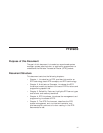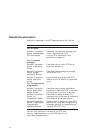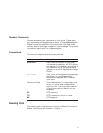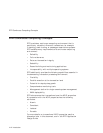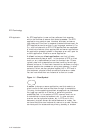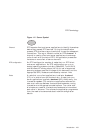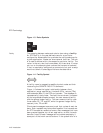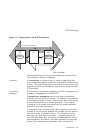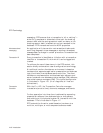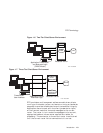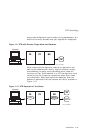
RTR Terminology
RTR Application
An RTR application is user-written software that executes
within the confines of several distributed processes. The RTR
application may perform user interface, business, and server
logic tasks and is written in response to some business need. An
RTR application can be written in any language, commonly C or
C++, and includes calls to RTR. RTR applications are composed
of two kinds of actors, client applications and server applications.
An application process is shown in diagrams as an oval, open for
a client application, filled for a server application.
Client
A client is always a client application, one that initiates
and demarcates a piece of work. In the context of RTR, a client
must run on a node defined to have the frontend role. Clients
typically deal with presentation services, handling forms input,
screens, and so on. A client could connect to a browser running a
browser applet or be a webserver acting as a gateway. In other
contexts, a client can be a physical system, but in RTR and in
this document, physical clients are called frontends or nodes.
You can have more than one instance of a client on a node.
Figure 1–1 Client Symbol
Server
A server is always a server application, one that reacts to a
client’s units of work and carries them through to completion.
This may involve updating persistent storage such as a database
file, toggling a switch on a device, or performing another
predefined task. In the context of RTR, a server must run on
a node defined to have the backend role. In other contexts,
a server can be a physical system, but in RTR and in this
document, physical servers are called backends or nodes. You
can have more than one instance of a server on a node. Servers
can have partition states such as primary, standby, or shadow.
1–4 Introduction




